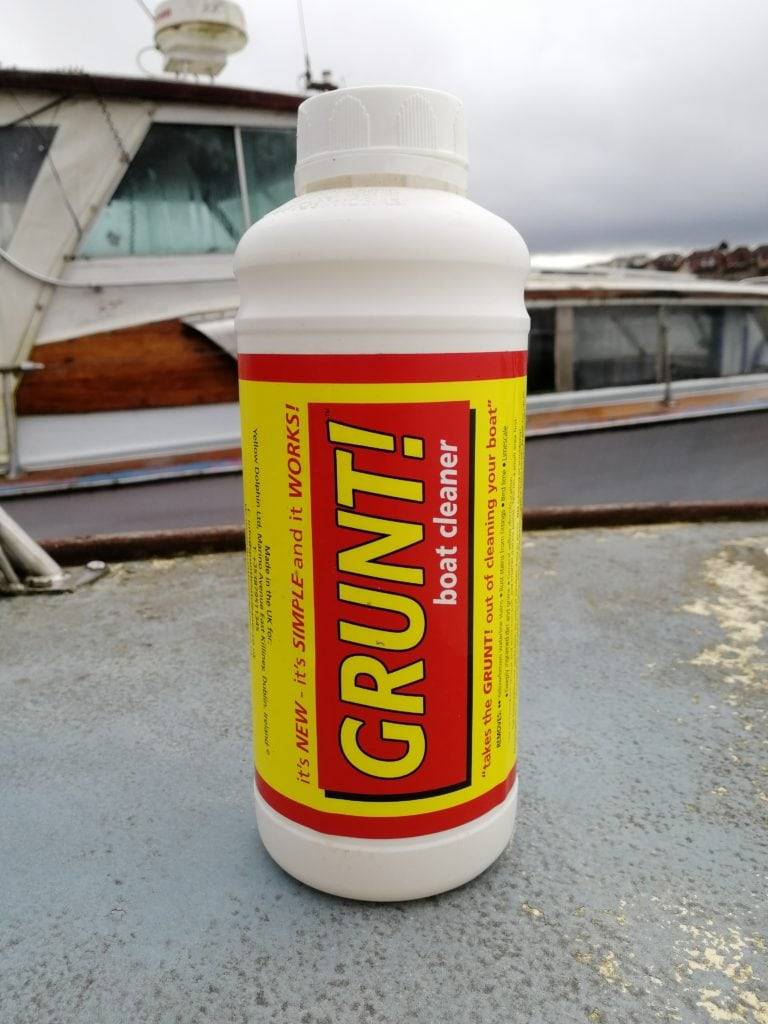
Table of Contents
WHAT IS GRUNT BOAT CLEANER?
Grunt Boat Cleaner is heavy duty marine cleaner designed to remove those hard to tackle stains that can occur from the waterline; rust and the general wear and tear of a boat. It works by penetrating the gel-coat; using a chemical reaction to gently neutralize and absorb staining without affecting the finish. Grunt claims that the stain can be simply washed off with a sponge and water. Grunt is available at online stores for around £14 for 500mls and £24 for 1-litre; depending on where you ship.
ABOUT THE COMPANY
The founders of Grunt started off their journey in Ireland, where they owned a boat yard. Customers would often come into their yard asking what products they were using, and where they could buy them. Seeing the demand and knowing what their customers wanted, they created their own range of marine products; made by industry professionals for a professional result. Whilst
WHOOPS!
On my last project
Dirt was another big problem; the worst affected areas being around the lead off’s from hatches and companionways etc. Dirt would collect around the hatch then rain would create a line from the hatch over the white gel-coat and into the gunwales. This line was often thick and black and a total pain to remove
I once made the ultimate rookie mistake of using steel wool on my boats’ wooden cockpit battens. The steel, of course, shredded all over the place and led to rust ruining my efforts. The boat, at the time, was my home and there’s nothing I hate more than a dirty home! Eventually, I learnt to remove the stains by sanding the gel-coat with very fine wet and dry sandpaper, which, to my surprise, worked a treat! It is important to remember that when you do this, however, you are removing layers of gel-coat and over time you will work your way through the gel meaning you will be left with no option but to paint over. This may devalue the boat.
So, with this in mind, it’s best to turn to options like Grunt boat cleaner; using a chemical reaction to clean as appose to abrasion. It’s safe to
THE TEST
Before we begin, let’s bear in mind that that Grunt recommends the working temperature of this product to be above 8°C (46.4°F). This is usually ideal as most normal boaters decide to clean their pride and joy on a nice sunny day. I’m not a normal boater, however; and I wanted to truly test Grunt, so I decided to wait until the outside temperature was at 8°C. I’m quite limited on

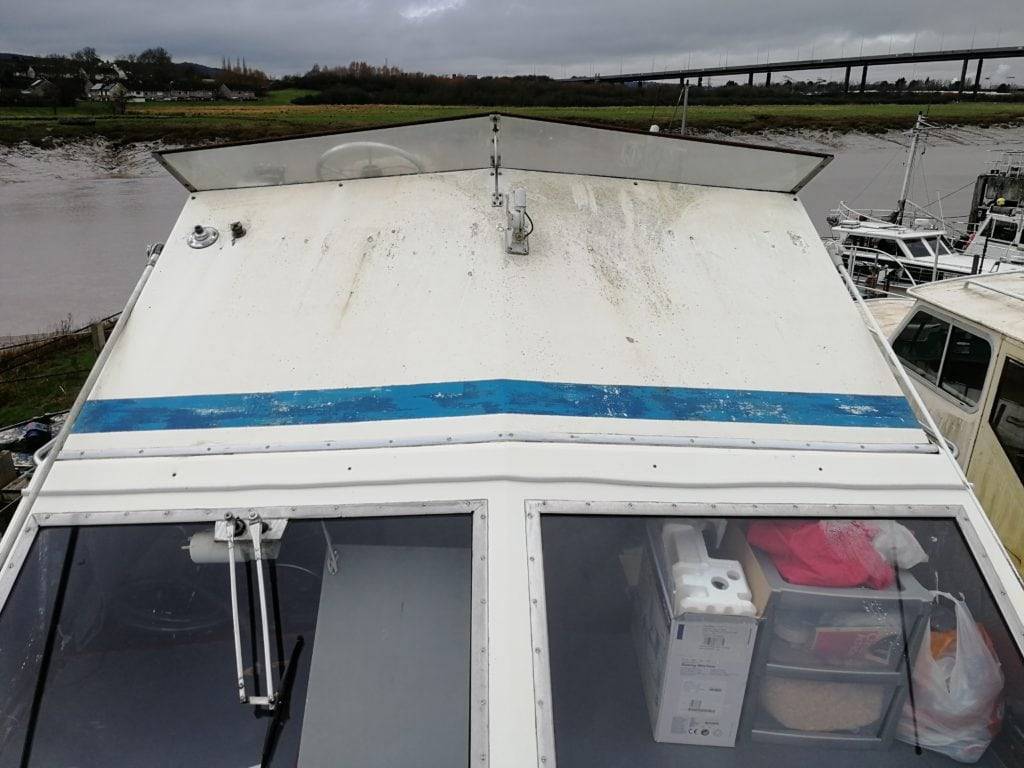
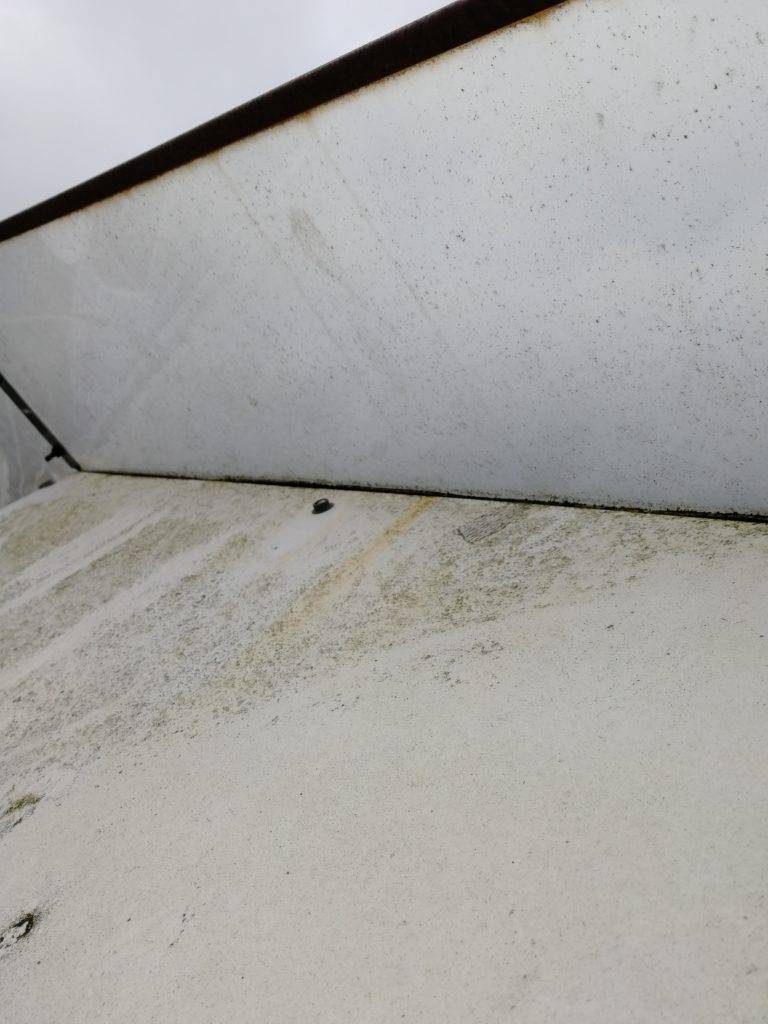
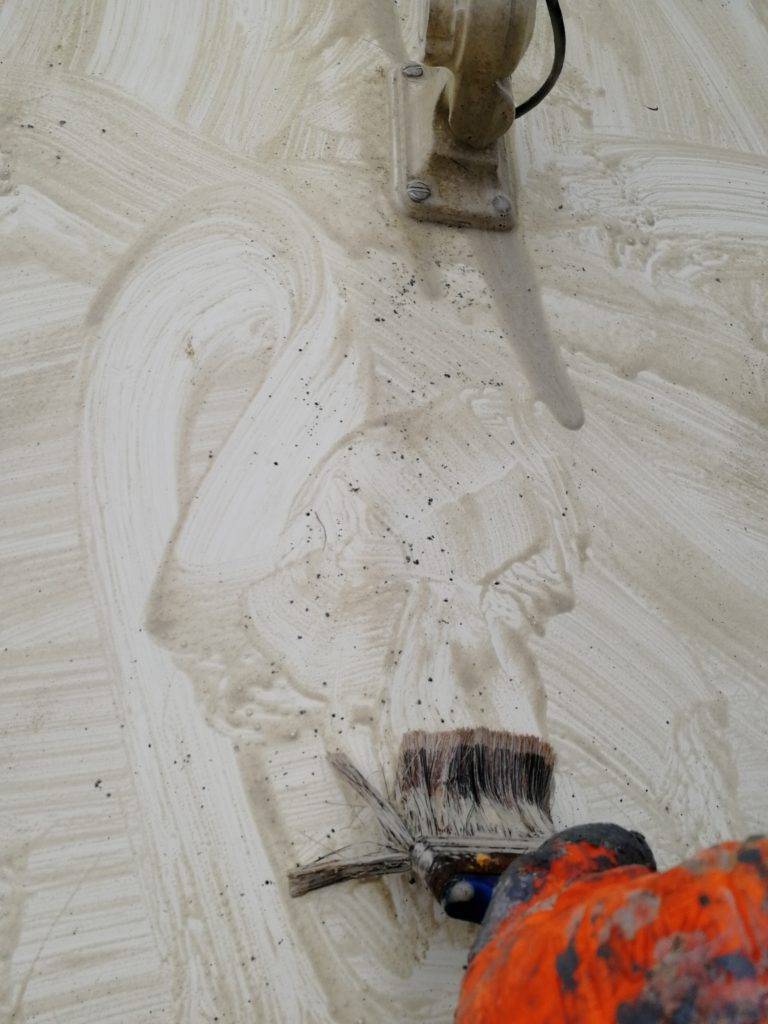
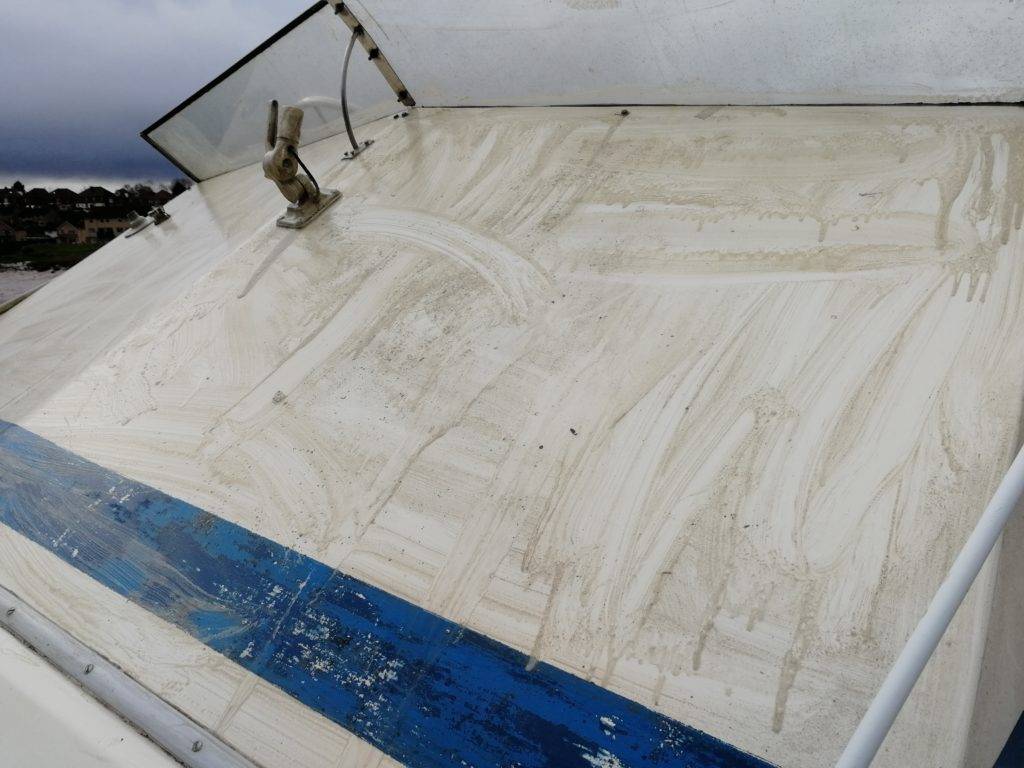
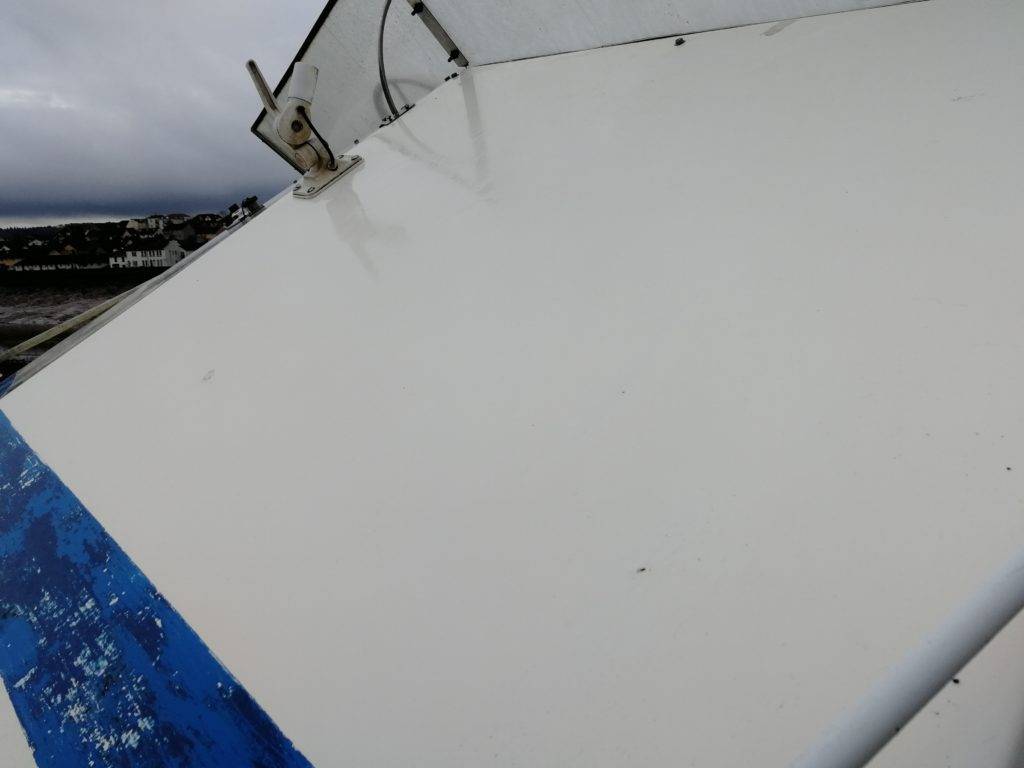
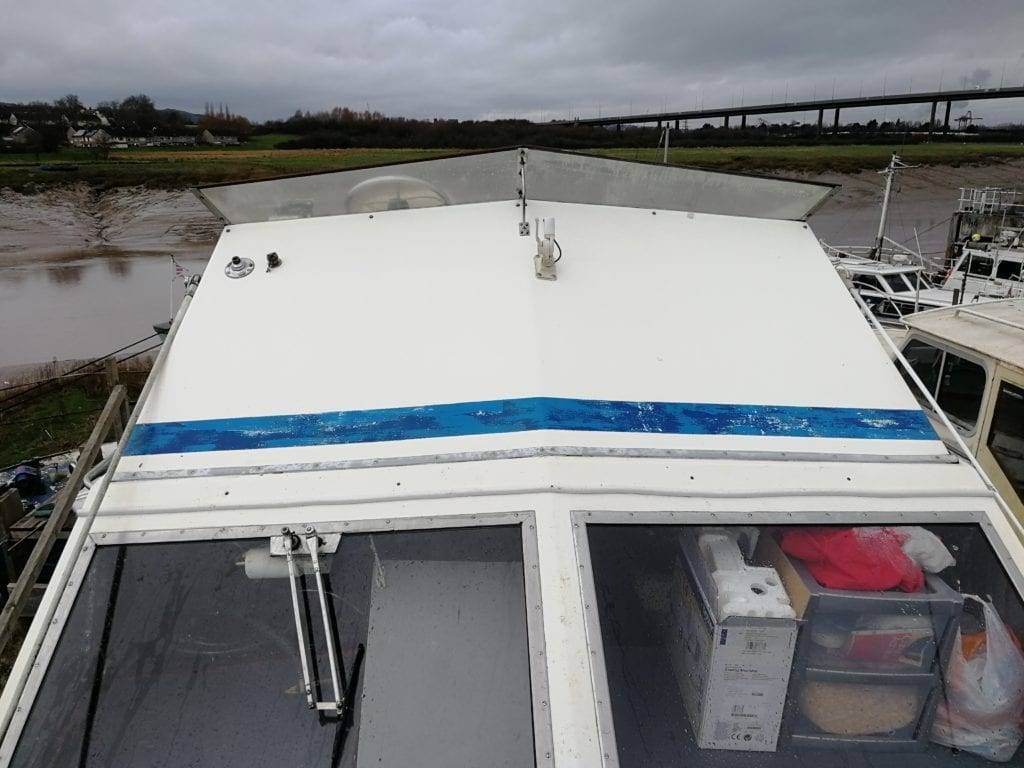
OUR REVIEW
I have to admit, I was gritting my teeth before I did this review; I wanted Grunt Boat Cleaner to do well but as always, I am willing to be honest if the product doesn’t live up to expectations. I was skeptical; mainly because of the price of the bottle in comparison to other DIY options on the market such as oxalic acid. This aside, I went about my test, applying Grunt using an old haggard paint brush I had lying around.
The next step was to leave it to work it’s magic for 30 minutes (as advised). I came back after half an hour, dubious to what would occur. I splashed the area hoping for all of the really tough encrusted dirt stains to simply fall off (like some kind of American commercial) but they were still present. I took my paintbrush and rubbed the area. Voilà! The stains, rust and dirt flew off and all they needed was the light mechanical intervention of my paint brush! Personally, I would probably use a plastic scourer or sponge in the future for ease.
Happy with the results; I talked with a friend on the
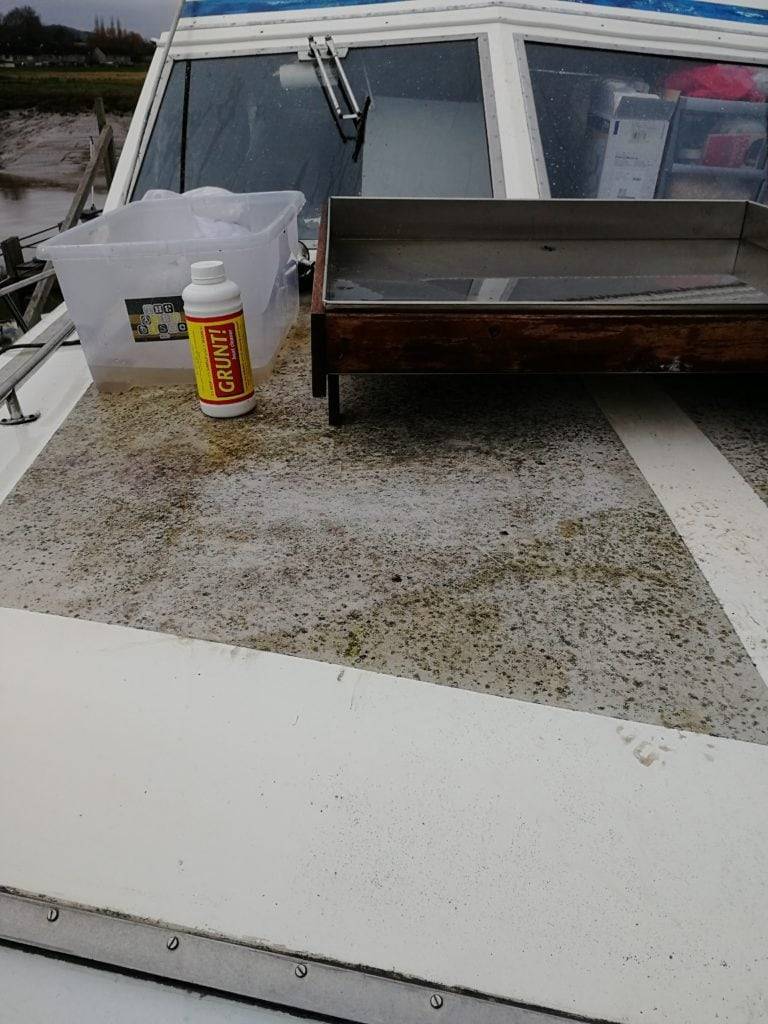
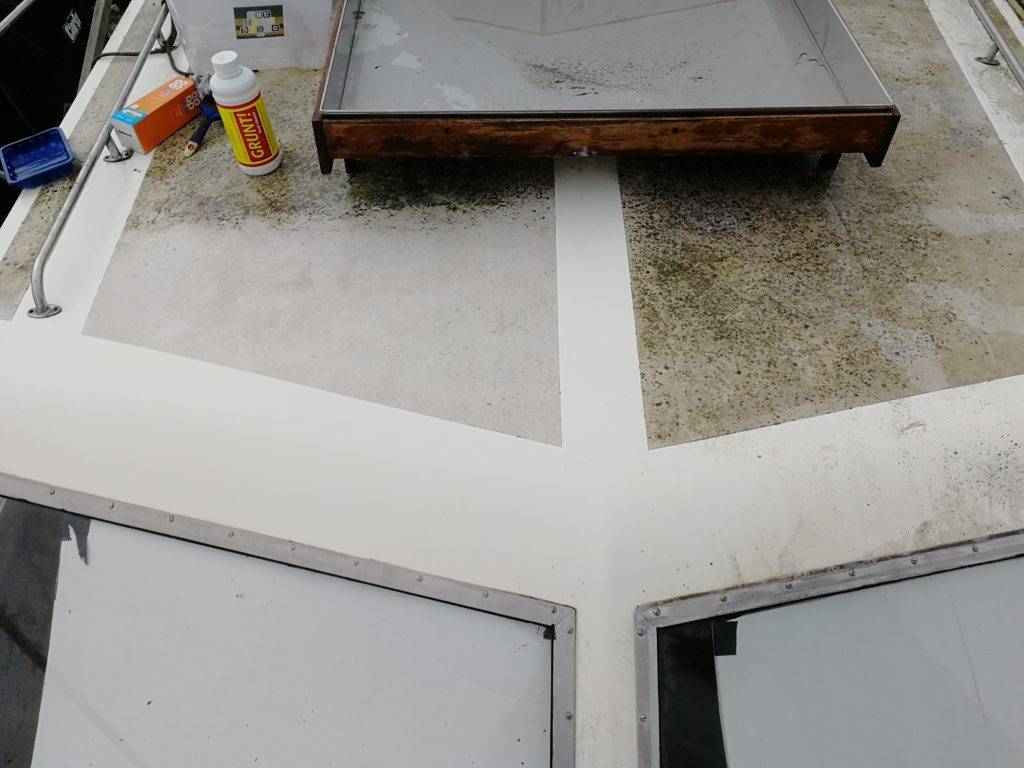
PROS
- -Comes in 500ml and
1 litre bottles. - Doesn’t contain oxalic or hydrochloric acid instead it contains
phosphoric acid which is claimed to be ecologically safer. - Removes yellow waterline stains, rust stains from fittings, birdlime
- Claims to penetrate into the
gel-coat to gently neutralize and absorb
staining without affecting thegel-coat in any way. - Grunt is easy to clean off with a sponge or cloth.
- It’s now widely available in most marine stores and chandleries as well as online retailers such as Amazon.
CONS
- It’s more expensive than some of the other boat cleaners on the market especially those involving oxalic acid.
- It may take two applications on heavy rust stains.

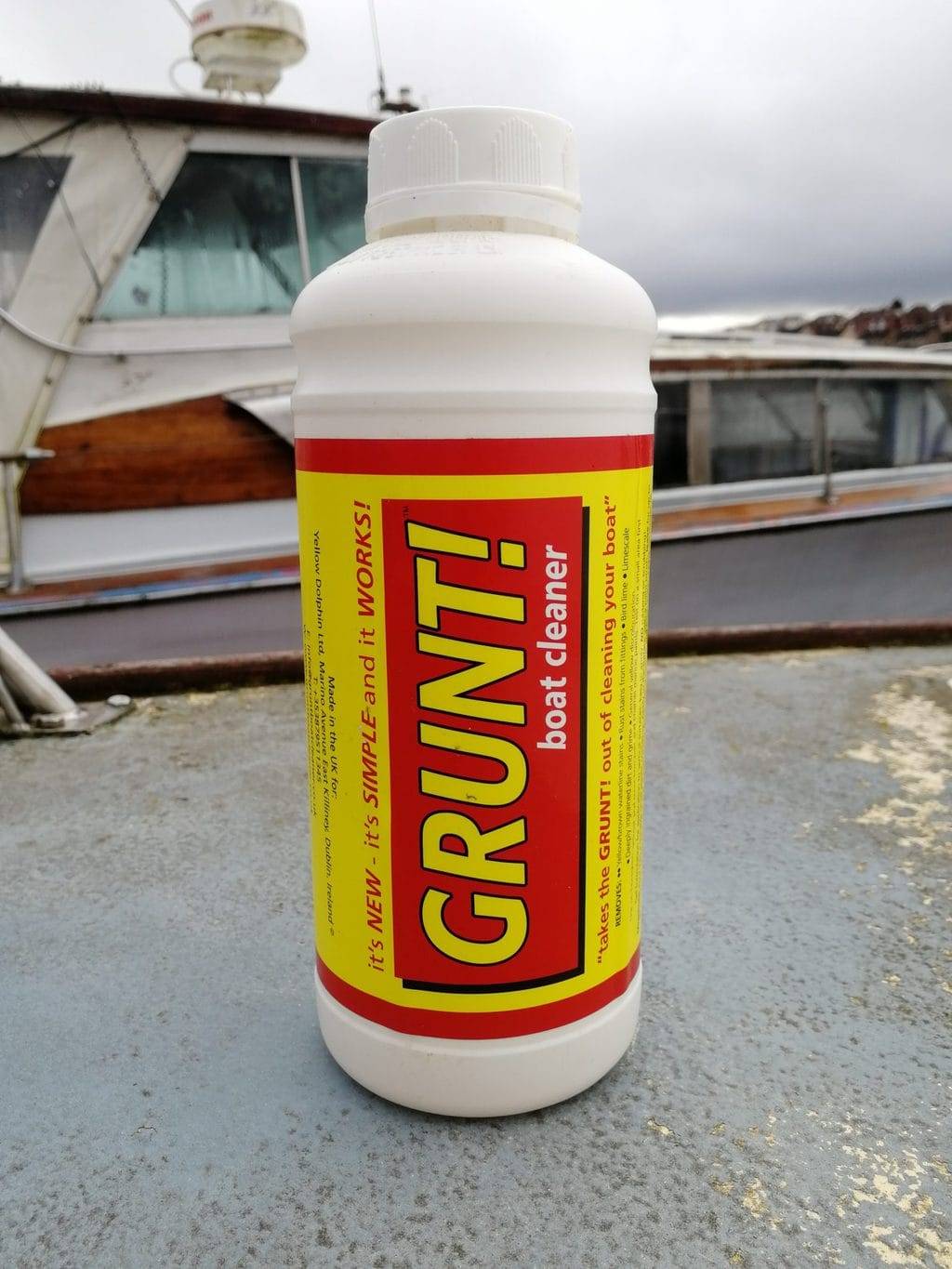
Thanks for the review guys I was looking for something with a bit of kick and this looks like it will do the job come the season!
Hi, Would this be suitable for a Caravan.
A lot of the caravans that iv’e come across seem to use a simlliar gelcoat/ topcoat to the the one found on on most GRP boats. On my Seamaster 950 which is polyester GRP it didn’t cause any damage and did a good job of protecting the area for what seemed like a good year after. The non slip area was very well cleaned without removing any paint. It’s not overally agressive in my opinion. Run a test patch first.
I have a question .. will Grunt affect the sheen on AWL Allfrip topsides. I have rust streaks and the yard here can only suggest 2000 Brit and water . I k ow that will fill the sheen in that patch . I am worried to use a strong acid so my best hope maybe Grunt?any suggestions?
Thanks